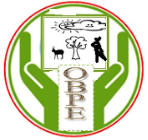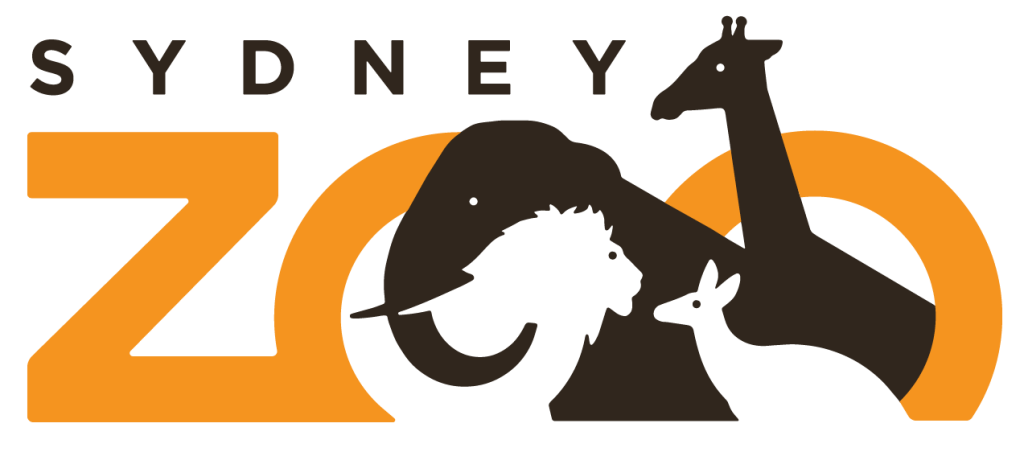Burundi:
The Heart of Africa
Burundi is a vibrant nation with rich cultural traditions like art, dance, music, and handicrafts. Nestled between Rwanda, Tanzania, and the Democratic Republic of the Congo, it’s the fifth-smallest country by area in continental Africa. It’s also the second most densely populated and has the lowest GDP per capita. This, together with the country’s political history and past conflicts, has pushed Burundi’s chimpanzee population to the brink.
Demand for land in Burundi is high. More than 90% of Burundian’s livelihoods depend on subsistence farming, yet their overall agricultural productivity remains low. To generate sufficient yields, farmers utilise relatively large areas of land. Subsequently, most of the once abundant forests have been converted to farmland. The few remaining small, isolated forest fragments in the country’s south, along with Kibira National Park in the north, are the last refuges for Burundi’s dwindling chimpanzee population.
Musée Vivant Redevelopment Project
Strategy
Ensuring the welfare of captive chimpanzees
Key outcomes
- The welfare of the chimpanzees is improved though the redevelopment of their housing infrastructure, the quality and quantity of their food, and the standard of care provided by staff
- The community’s awareness of their roles, responsibilities, rights, and returns in both chimpanzee and general wildlife conservation is increased through environmental education resources and programs at Musée Vivant
- The capacity of local veterinary and captive chimpanzee care staff is enhanced through training programs that meet industry standards and best practices
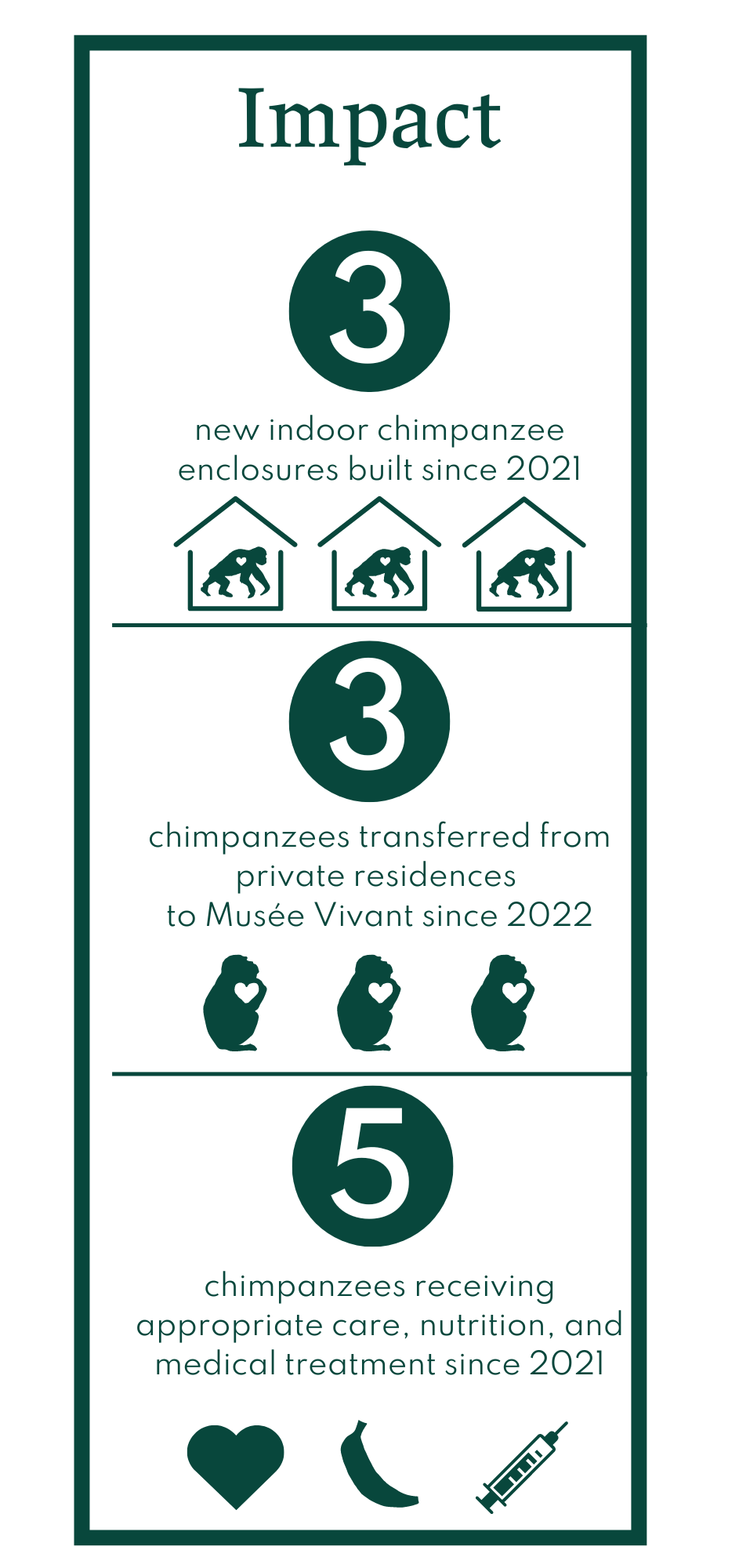
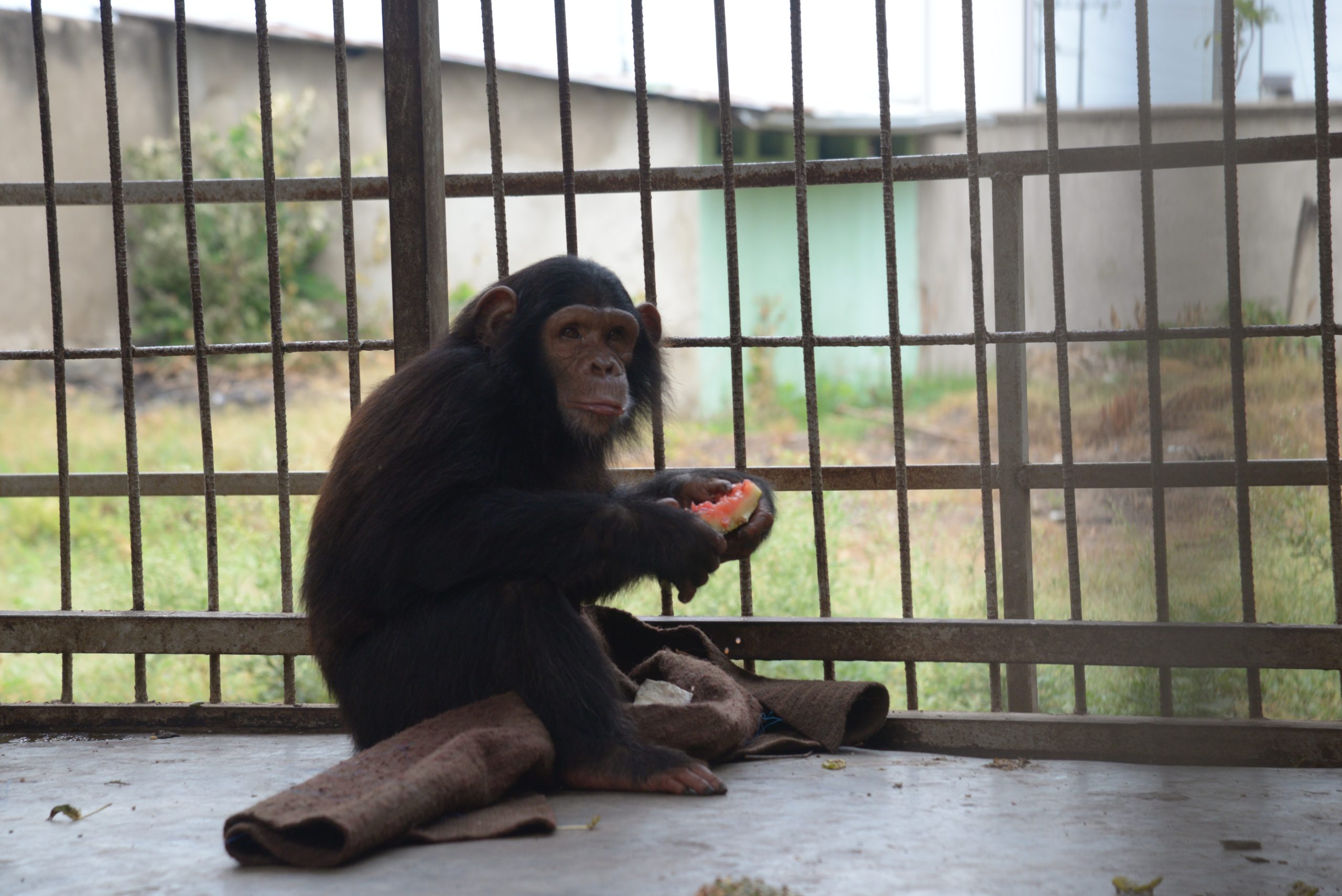
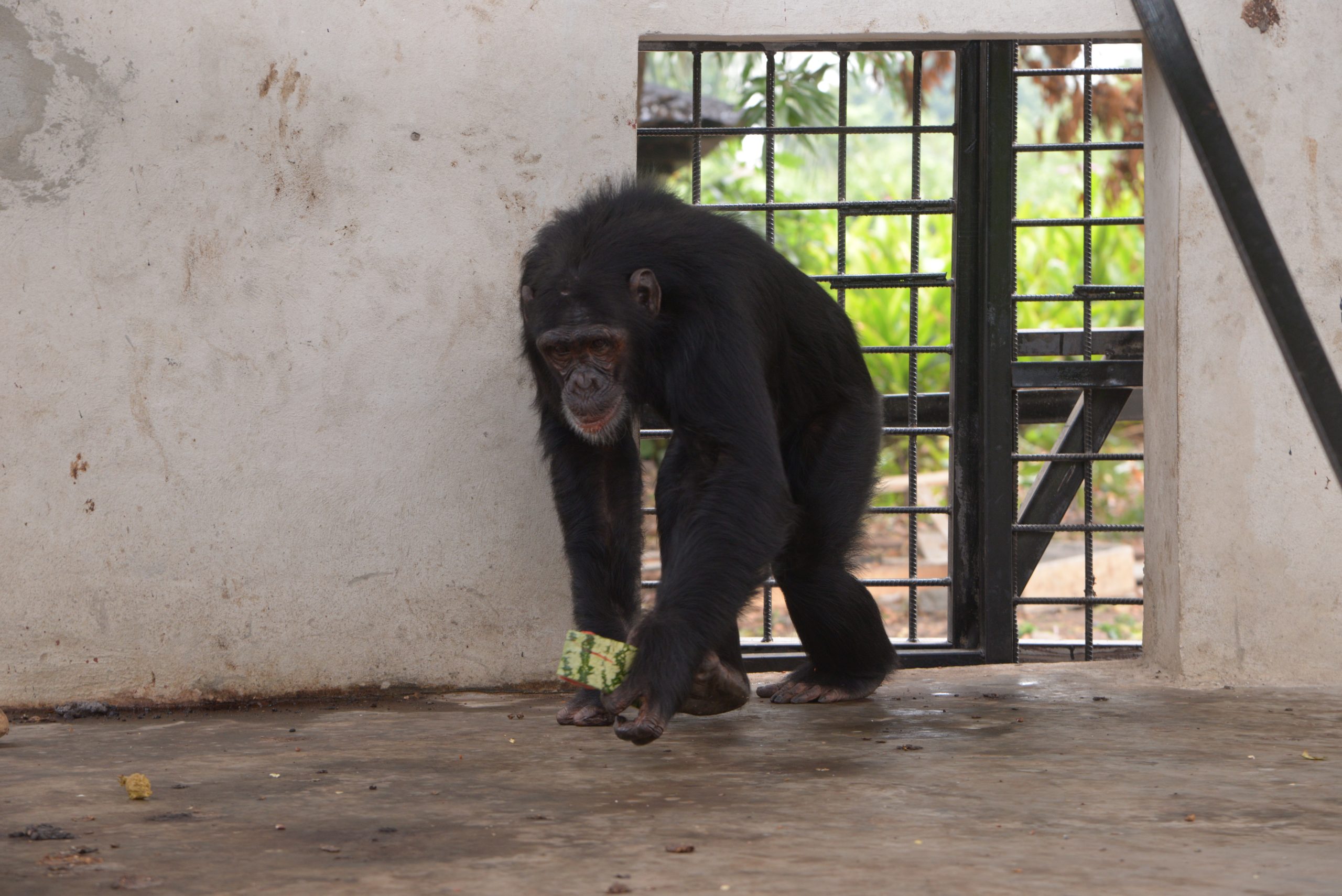
Project Overview
Musée Vivant, located in Bujumbura, is a government-run 3-hectare zoo and museum dedicated to the wildlife and art of Burundi. Unfortunately, it is severely underresourced, so most animals in its collection are kept in poor conditions. Amongst its residents are 5 chimpanzees: adults Joy, Avril, and Lulu, subadult Flora, and juvenile Chippy.
2021
Upon learning that Musée Vivant’s original three chimps Joy, Kita, and Flora, were underfed and housed in small, unsafe cages, the Jane Goodall Institute Australia (JGIA) pledged to support the improvement of their situation. In partnership with local NGO, 3C, we started the redevelopment of the chimps’ housing infrastructure and provided funding for specialist care, adequate nutrition, and medical attention.
2022
Following the construction of a new indoor enclosure and renovation of another, and under the guidance of specialist great ape veterinary staff from Lwiro Primate Rehabilitation Centre in the Democratic Republic of Congo, an additional three chimpanzees—Chippy, Avril, and Lulu—were transferred from a private residence to Musée Vivant. This move united all known captive chimps in Burundi in professional care. Through JGIA’s newly-formed partnership with Sydney Zoo, critical funding was provided to ensure all six chimpanzees received appropriate care.
2023
With generous support from major donors, Taronga Zoo’s primate keepers, and our ongoing partnership with Sydney Zoo, JGIA continued funding the daily care costs of the chimpanzees, as well as the construction of another two indoor enclosures. These new buildings allowed all chimpanzees to be transferred out of their existing, substandard cages, and for the complex social integration process to begin.
2024
A new joint partnership between local NGO, 3C, the Burundian Office for Environmental Protection (OBPE), and JGIA was entered to enhance the delivery, implementation, and impact of the project. The involvement of OBPE strengthens local capacity and expertise in captive chimpanzee care, and brings us one step closer to realising our shared vision of Musée Vivant being transformed into a wildlife rehabilitation and environmental education space.
2024 Funding Needs




Meet the Chimps

Joy
Sex: Male
Birth year: 2002
Age class: Adult
Joy came to Musée Vivant (MV) in 2015 after being kept as a pet at a restaurant in Bujumbura. When the venue was sold, the new owner surrendered him to MV. For most of Joy’s time at MV, he shared an enclosure with female, Kita, until her devastating passing in 2023. He is now in the process of being integrated with the remaining four chimpanzees at MV.

Avril
Sex: Female
Birth year: 2014
Age class: Adult
Avril arrived at Musée Vivant together with Lulu in August 2022. Prior to this, the two females were
housed together at the private residence of an expat couple living in Bujumbura. Avril had been kept there since she was 1 year old.

Lulu
Sex: Female
Birth year: 2006
Age class: Adult
Like Avril, Lulu had been kept in captivity since she was 1 year old. Shortly after their arrival at Musée Vivant, Lulu and Avril were successfully integrated with the two younger chimpanzees, Flora and Chippy.

Flora
Sex: Female
Birth year: 2016
Age class: Sub-adult
Before moving into her newly-built enclosure in 2022, Flora had been kept alone in a tiny cage at Musée Vivant since she was 8 months old. Prior to this, she was kept by an expat at a private residence.

Chippy
Sex: Male
Birth year: 2018
Age class: Juvenile
At 3 months old, Chippy was given to the same expat couple that was keeping Avril and Lulu. However, unlike the two females who shared the same enclosure, Chippy was housed separately. Upon his arrival at MV in 2022, he was integrated with Flora, and the pair formed an immediate bond. He has also now been successfully integrated with Avril and Lulu.
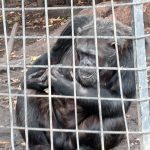
Kita
Sex: Female
Birth year: 2007
Passing year: 2023
Kita sadly passed away in April 2023 from a cellulitis infection that originated in her left foot and leg. Her untimely passing was likely the result of the poor quality and unsanitary conditions of her enclosure, and lack of qualified on-site veterinary staff. Had a vet been present to monitor her condition and provide appropriate treatment from the onset of her symptoms, her death could have been prevented. The loss of Kita highlights how critical and urgent our work is to ensuring the health and safety of Musée Vivant’s five remaining chimpanzees.
Project Partners
Vyanda Forest Nature Reserve Project
Strategies
Protecting wild chimpanzee populations
Protecting the connectivity, quality, and size of chimpanzee habitats
Key outcomes
- The ranger team is operationalised to ensure the physical integrity of Vyanda Forest Nature Reserve
- 1000 ha of degraded areas within VFNR are restored through the planting of indigenous species and assisted natural regeneration
- The livelihoods of the surrounding human communities are improved through increased food security
- Human communities are sensitised to peaceful cohabitation with chimpanzees through environmental education and engagement activities

Project Overview
In 2023, with generous support from Taronga Conservation Society Australia, JGIA extended our partnership with local conservation non-profit, 3C, to enhance the protection of Vyanda Forest Nature Reserve (VFRN).
Located in southern Burundi, VFNR is a 4670 ha protected area managed by the Burundian Office for Environmental Protection (OBPE). Characterised by miombo woodland and Afromontane forest, it is an isolated fragment that is home to approximately 30 endangered eastern chimpanzees (Pan troglodytes schweinfurthii). Despite having legal protection status, VFNR and its inhabiting chimps still face many threats and management challenges, most notably
- >300 households within the reserve boundaries
- Clearing for agriculture and charcoal production
- Makeshift socioeconomic infrastructures established by the surrounding communities
- Retaliatory human-chimpanzee conflict
- Recurrent bushfires, both anthropogenic and natural
- Reserve boundaries contested by surrounding communities
- Lack of basic management infrastructure and equipment
- Lack of staff capacity
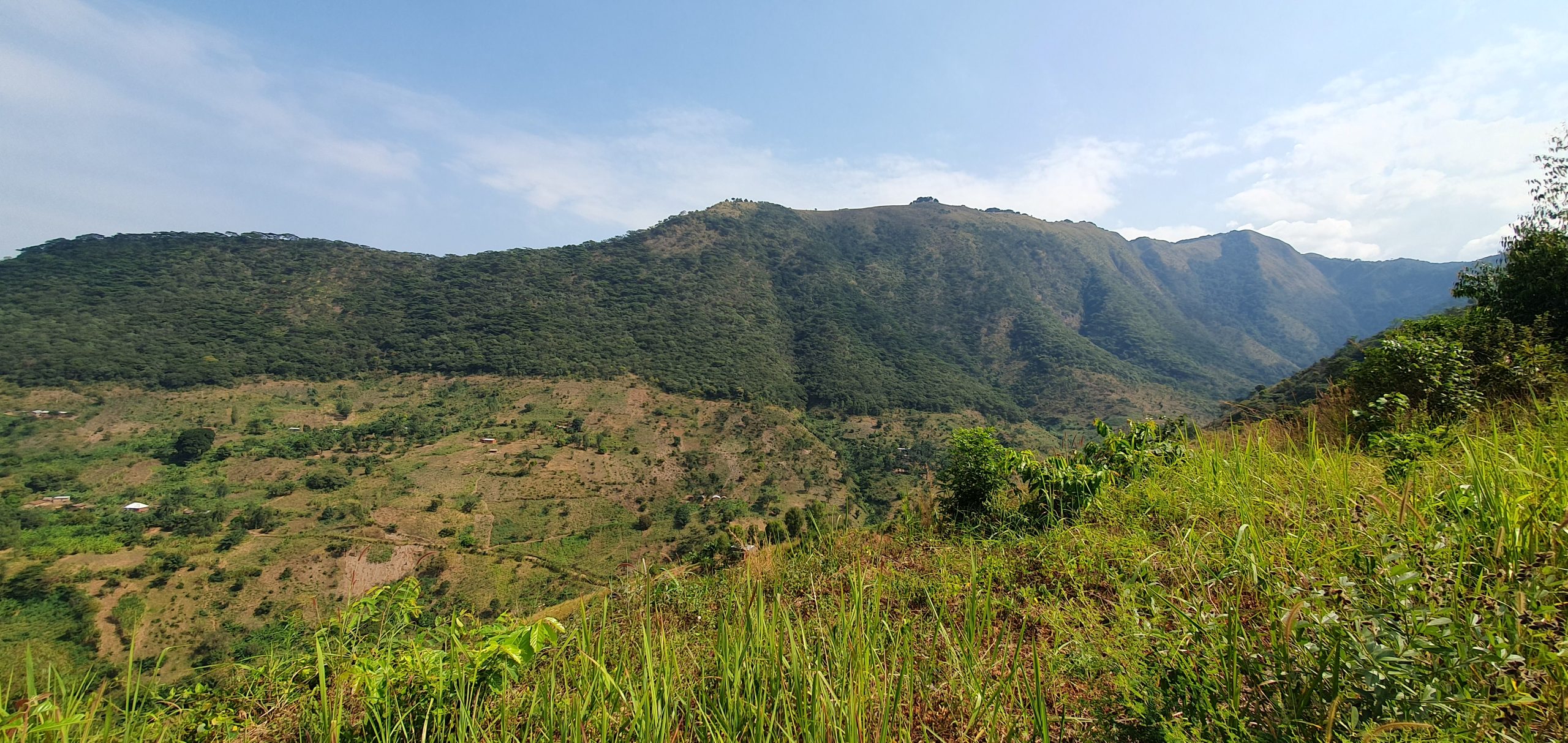
2024 Funding Needs



Project Partners

Community of Change
Implementing partner
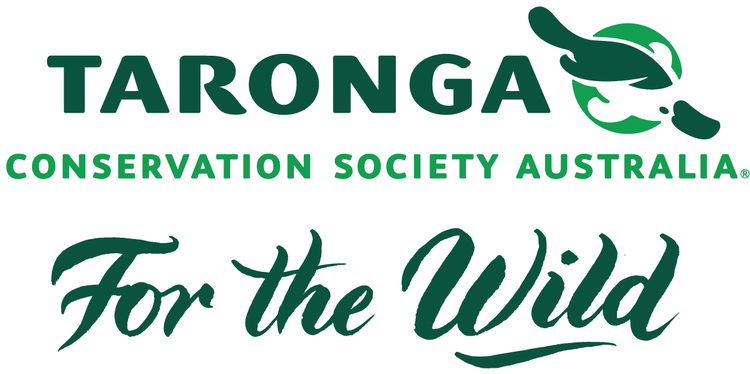
Funding partner
You can make a difference
Help us inspire actions that connect people with animals and our shared environment.
Our Accreditations






